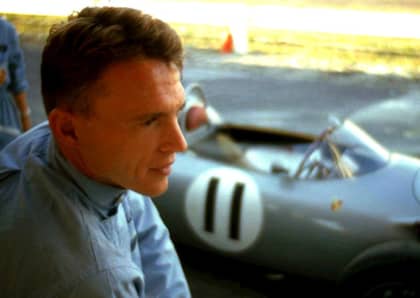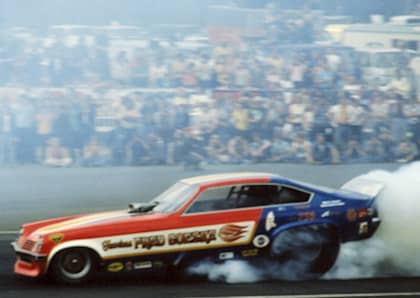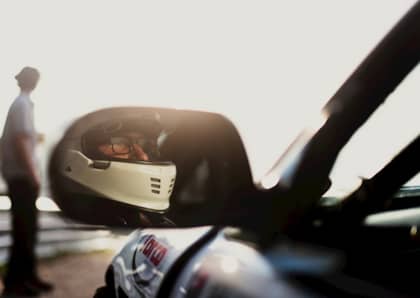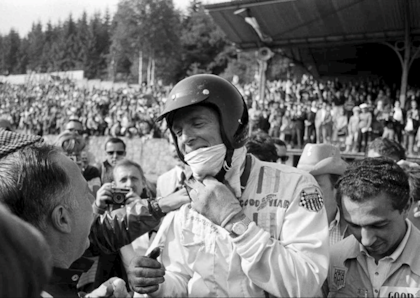The Racer Called Rajo Jack
Auto racing was everywhere in Depression-Era Los Angeles. The Southland has always been able to claim itself as the center of motor culture and even during those long, lean years there were wooden boardtracks in Beverly Hills and Culver City. Santa Monica and Long Beach organized street courses, and dirt tracks were hosting both sanctioned and unsanctioned free-for-all events. Future racing legends Rex Mays, Louie Meyer and countless other rough and tumble drivers would duke it out every weekend, thrilling the fans and taking on all comers. And there was another driver out there, running elbow-to-elbow with the rest of them, a driver who stood apart.
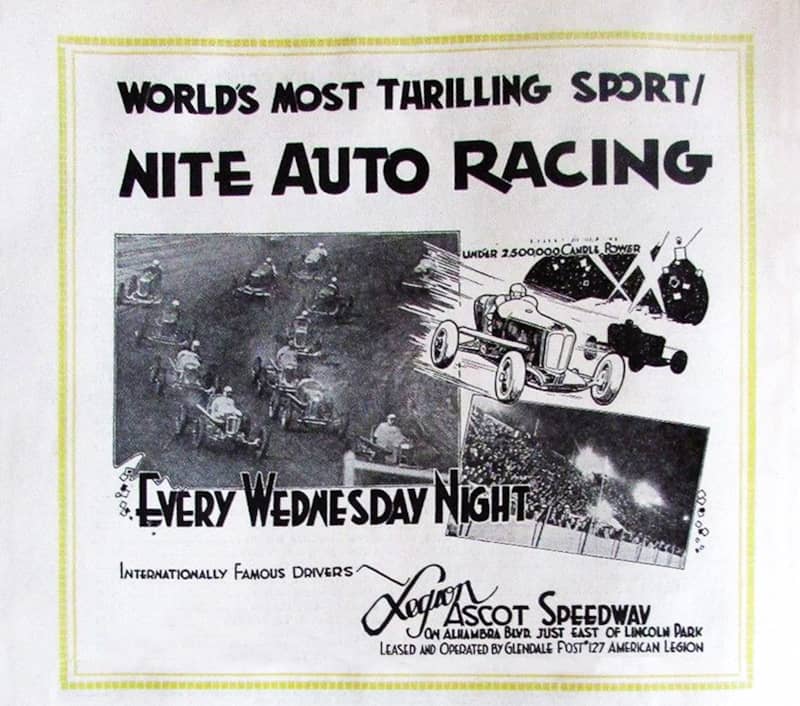
Dewey Gatson was born in Texas in 1905. His father worked steady for the railroad, which provided a stable home life, something that most African American kids of the time couldn’t count on. Gatson was drawn to anything with a motor and wheels. At 16, Gatson waved goodbye to Texas and did what almost every teenager wanted to do- joined a traveling sideshow called the Doc Marcell Medicine Show. The new roustabout immediately showed mechanical aptitude, eventually being put in charge of the troupe’s fleet of twenty cars.
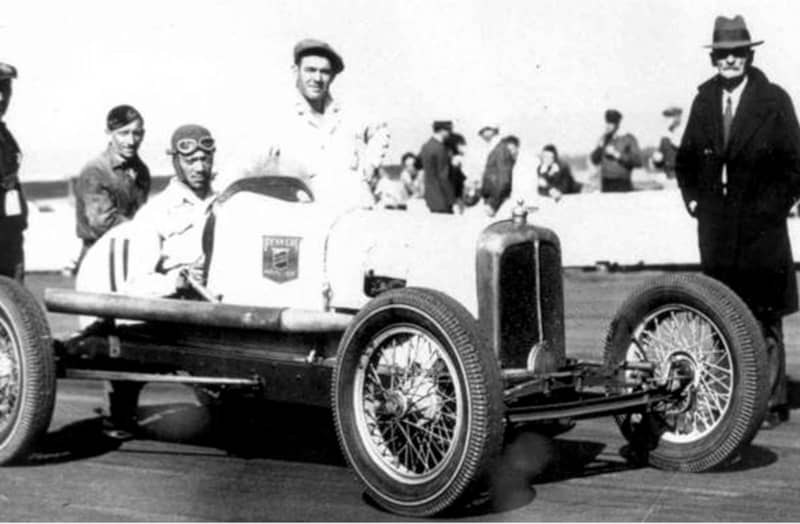
Still in his teens, Gatson began racing cars at many of the rural fairs that the Marcell family would follow on the seasonal circuit. His racing interest presented problems due to the pervasive racism of early 20th century America. He built a series of Model T-based roadsters and would enter events under the name ‘Jack DeSoto’ claiming Moroccan, Portuguese or Native American decent. The ruse usually worked and the young kid driver from Texas started winning races.
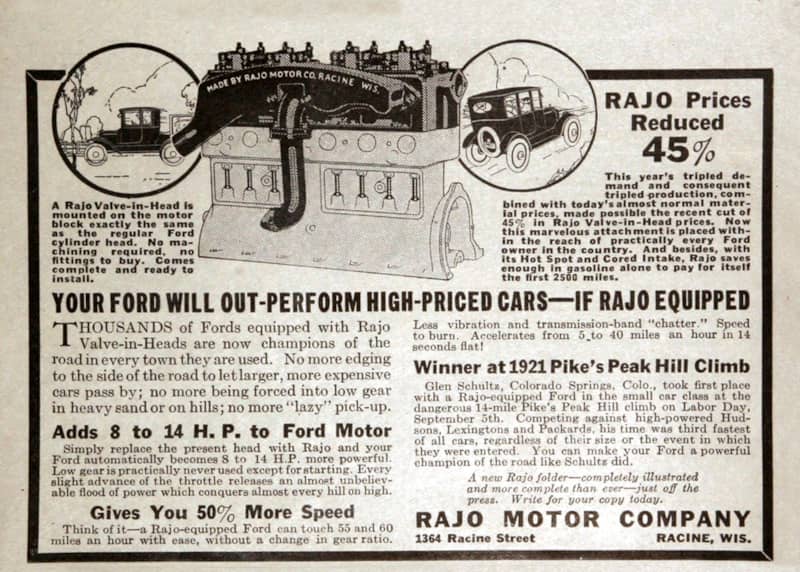
Everyone in motorsports knew that L.A. was the place to make your mark. Settling in Pasadena, Gatson found work as a mechanic for several racing teams and began extracting as much performance as possible from his Model T racers. He was known to use Rajo cylinder heads to great effect, impressing Rajo company owner Joe Jargersberger. In spite of the split society that existed at the time, Gatson was liked and respected by most of the racing community, so much so that Jargersberger made him his Los Angeles Rajo distributer and salesman. From then on Dewey Gatson became Rajo Jack.
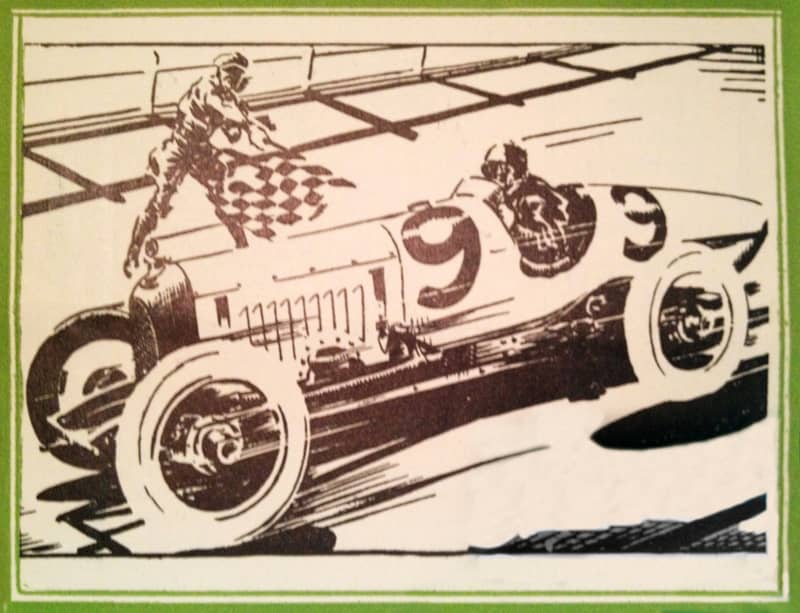
Rajo Jack raced everything he could get his hands on, up and down the West Coast. Stock Cars, Midgets, Sprint Cars, big sedans, if it had four wheels he would race it. His skin color became less of a concern but the complications his race presented never went away completely. For many years he would duck down behind the cowl when someone tried to take a photo, hoping that obscuring his features would hide his skin color. AAA sanctioned the premier racing series of the time, including the Indy 500. Unfortunately, while local organizers had some discretion, the AAA and other sanctioning bodies were less likely to allow a man of Rajo’s African heritage to compete. Rajo mostly drove the ARA, a rival “Outlaw” series. There could still be trouble for him, but the ARA let him race. One constant worry for both Rajo and race promoters was what to do about the trophy girl if he won. In the 1930’s the traditional trophy girl kiss could start a riot. The solution was that Rajo’s wife, Ruth, always had to be present when he raced. If he won- and he won a lot of them- his missus would present the trophy and give him the peck on the cheek.
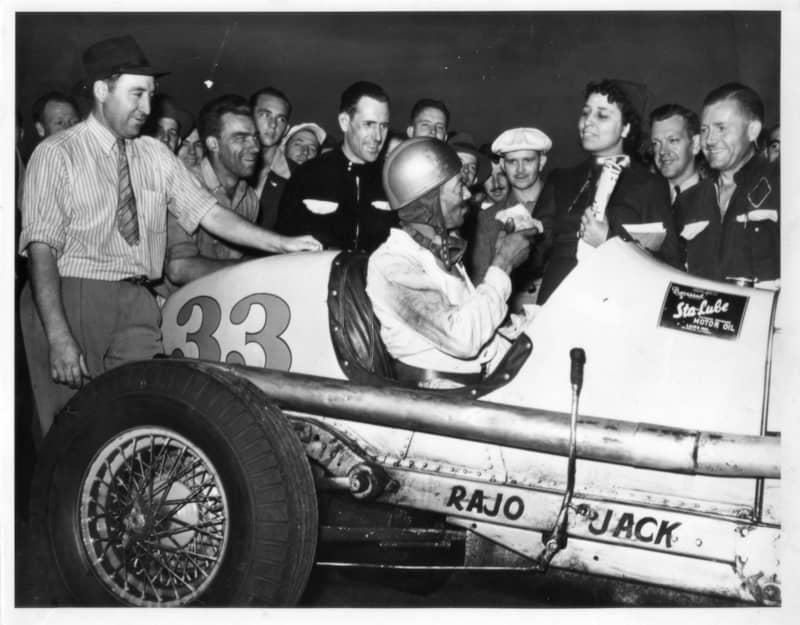
While preparing his car for an Oakland 100 mile race, Rajo called his wife to get ready for the road trip up. She found him loading the car into the back of their truck and then watched as he piled in a disassembled engine and a collection of tools. “I’m gonna rebuild this on the way. You’re driving.” There was a 400-mile drive without modern freeways ahead of them. He finished the job just as they rolled into town and made qualifying. Having qualified third and finishing second, Rajo Jack called it a weekend and told his wife to get some rest as he took the wheel for the long drive home.
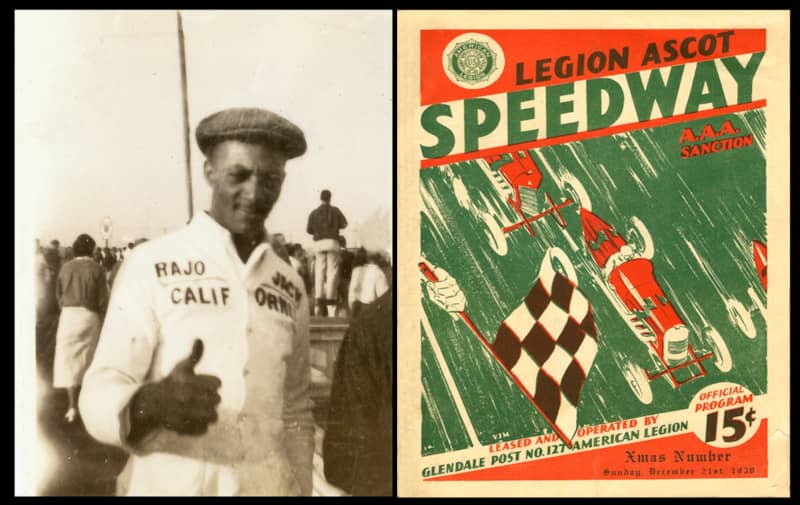
You had to be tough to be a race driver in the 1920-40s. Race fatalities were common. Numerous injuries had left Rajo with only partial use of an elbow, which made it difficult to reach the steering wheel. He had been blinded in one eye while performing motorcycle stunts. But the checkered flags and the glory that went with triumph tasted sweet, especially when considering the racial nonsense that had to be dealt with for most of his life. A look at his stats reveals some seriously impressive victories. In 1934 Rajo Jack won the 200-mile race at Silvergate Speedway in San Diego. The next year he won the 100-mile national in Sacramento. Then it was the Stock Car 200 miler at Mines Field in Los Angeles, which was a kind of dirt/road course. He lapped the field twice and took home the $4000.00 purse. That was a lot of money during the Depression. He then went on to win a 300-mile Stock Car race in Oakland and followed that up with a 500 mile win as co-driver with Tex Peterson, again at Oakland Speedway. He closed out the ‘30s with multiple wins at the Southern Ascot Speedway, south of Los Angeles.
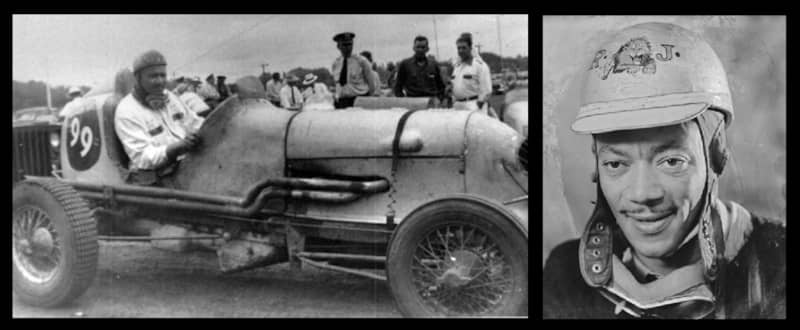
World War II put an end to auto racing for the duration of the war. Post-war, Rajo Jack would continue turning wrenches and racing roadsters until his heart gave way in 1956. Dewey Gatson/Rajo Jack couldn’t be ignored, as a driver or builder. But it was his courage and a refusal to allow the casual racism of the time to hold him back that stands as his greatest victory. Largely unknown, Rajo Jack’s story played out many years before Jackie Robinson broke the color barrier in Major League Baseball. He was inducted into the West Coast Stock Car Hall of Fame in 2002 and his name now stands forever among the greats.




